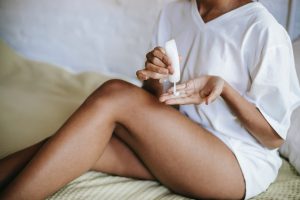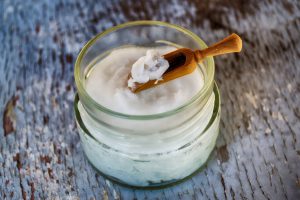In-Depth Guide to Understanding Body Acne

Acne is a common skin condition that affects millions of people around the world. While it’s often associated with the face, acne can also appear on other parts of the body, including the chest, back, and arms. Body acne can be just as frustrating and embarrassing as facial acne, but with the right knowledge and treatment, it’s possible to achieve clear, blemish-free skin.
In this blog, we’ll dive into the causes, prevention, and treatment of body acne. Let’s get started!
Causes of Body Acne
There are several factors that can contribute to the development of body acne, including:
1. Hormonal Changes
Hormonal changes, such as those that occur during puberty or menstrual cycles, can increase oil production, leading to clogged pores and acne breakouts.
2. Stress
Stress can cause an increase in cortisol levels, which can trigger inflammation and lead to acne.
3. Genetics
Some people are genetically predisposed to developing acne, and may experience more severe or frequent breakouts.
4. Bacteria
Bacteria, such as Propionibacterium acnes, can cause inflammation and contribute to the development of acne.
5. Certain Medications
Certain medications, such as steroids and hormonal contraceptives, can increase the risk of developing acne.
6. Poor Skincare Habits
Wearing tight, synthetic clothing that doesn’t allow your skin to breathe, or not washing your skin regularly, can lead to clogged pores and acne breakouts.

Prevention of Body Acne
To prevent body acne, it’s important to follow a healthy skincare routine, maintain a healthy diet, and avoid triggers that can contribute to acne breakouts. Here are some tips for preventing body acne:
1. Keep Your Skin Clean
Wash your skin regularly with a gentle, non-comedogenic cleanser to remove oil, dirt, and sweat. Avoid using hot water, as it can dry out your skin and trigger breakouts.
2. Wear Breathable Clothing
Wear loose-fitting, breathable clothing made from natural fibers, such as cotton, to prevent sweat and bacteria buildup on your skin.
3. Avoid Touching Your Skin
Avoid touching your skin with your hands, as they contain bacteria and oil that can contribute to acne.
4. Eat a Healthy Diet
Eating a diet rich in fruits, vegetables, and lean protein can help improve the health of your skin and reduce the risk of acne breakouts.
5. Avoid Trigger Foods
Some foods, such as dairy and high-glycemic index foods, can trigger acne breakouts in some people. Avoiding these foods, or reducing your intake of them, can help prevent acne.
Treatment of Body Acne
There are several options for treating body acne, including topical treatments, oral medications, and lifestyle changes. It’s important to find the treatment that works best for you and to stick with it to see results. Here are some options for treating body acne:
1. Topical Treatments
Topical treatments, such as benzoyl peroxide, salicylic acid, and retinoids, can be applied directly to the skin to unclog pores, reduce inflammation, and prevent acne breakouts.
2. Oral Medications
Oral medications, such as antibiotics and isotretinoin, can be prescribed by a doctor to help clear up body acne. These medications work by reducing the amount of oil produced by the skin and killing the bacteria that contribute to acne.
3. Lifestyle Changes
Making lifestyle changes, such as eating a healthy diet, reducing stress, and avoiding triggers that can contribute to acne breakouts, can also be effective in treating body acne. Exercise, for example, can help reduce stress and improve circulation, which can help keep your skin healthy.
4. Laser and Light Therapy
Laser and light therapy can be used to reduce acne breakouts by targeting the bacteria that cause acne and reducing inflammation. This type of treatment is often used in combination with other acne treatments for more severe cases.
5. Chemical Peels
Chemical peels can help to remove dead skin cells and unclog pores, reducing the risk of acne breakouts. Chemical peels are usually done in a dermatologist’s office, and the type of peel used will depend on the severity of your acne.

It’s important to remember that not all treatments work for everyone, and it may take some trial and error to find the right treatment for your body acne. It’s also important to be patient and consistent with your skincare routine and treatment plan, as it can take several weeks to see results.
In addition to the above treatments, there are a few things you can do at home to help clear up body acne.
Tips and Tricks:
- Use a body wash with salicylic acid: Salicylic acid can help unclog pores and prevent acne breakouts. Look for a body wash that contains salicylic acid and use it daily.-
- Exfoliate regularly: Exfoliating your skin can help to remove dead skin cells and prevent clogged pores. Use a gentle exfoliating scrub once or twice a week to keep your skin smooth and clear.
- Use non-comedogenic products: Non-comedogenic products are designed to not clog pores, making them a good choice for people with acne-prone skin. Look for products labeled “non-comedogenic” and avoid using heavy creams or lotions that can clog your pores.
- Avoid tight-fitting clothing: Tight-fitting clothing can trap sweat and bacteria against your skin, leading to acne breakouts. Choose loose-fitting, breathable clothing to prevent acne.
Conclusion
body acne can be frustrating and embarrassing, but with the right knowledge and treatment, it’s possible to achieve clear, blemish-free skin. Remember to keep your skin clean, wear breathable clothing, avoid triggers that can contribute to acne, and seek treatment from a dermatologist if your acne is severe or persistent. With time and patience, you can achieve the clear, healthy skin you deserve.

